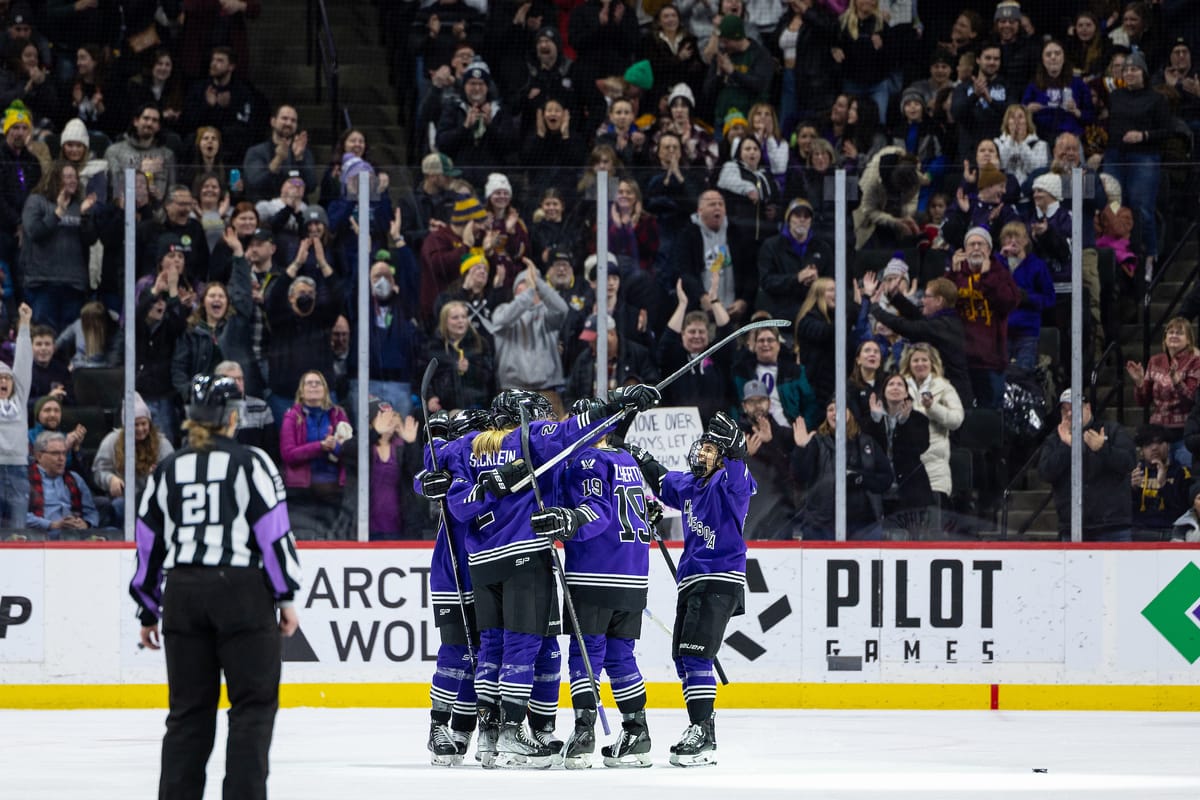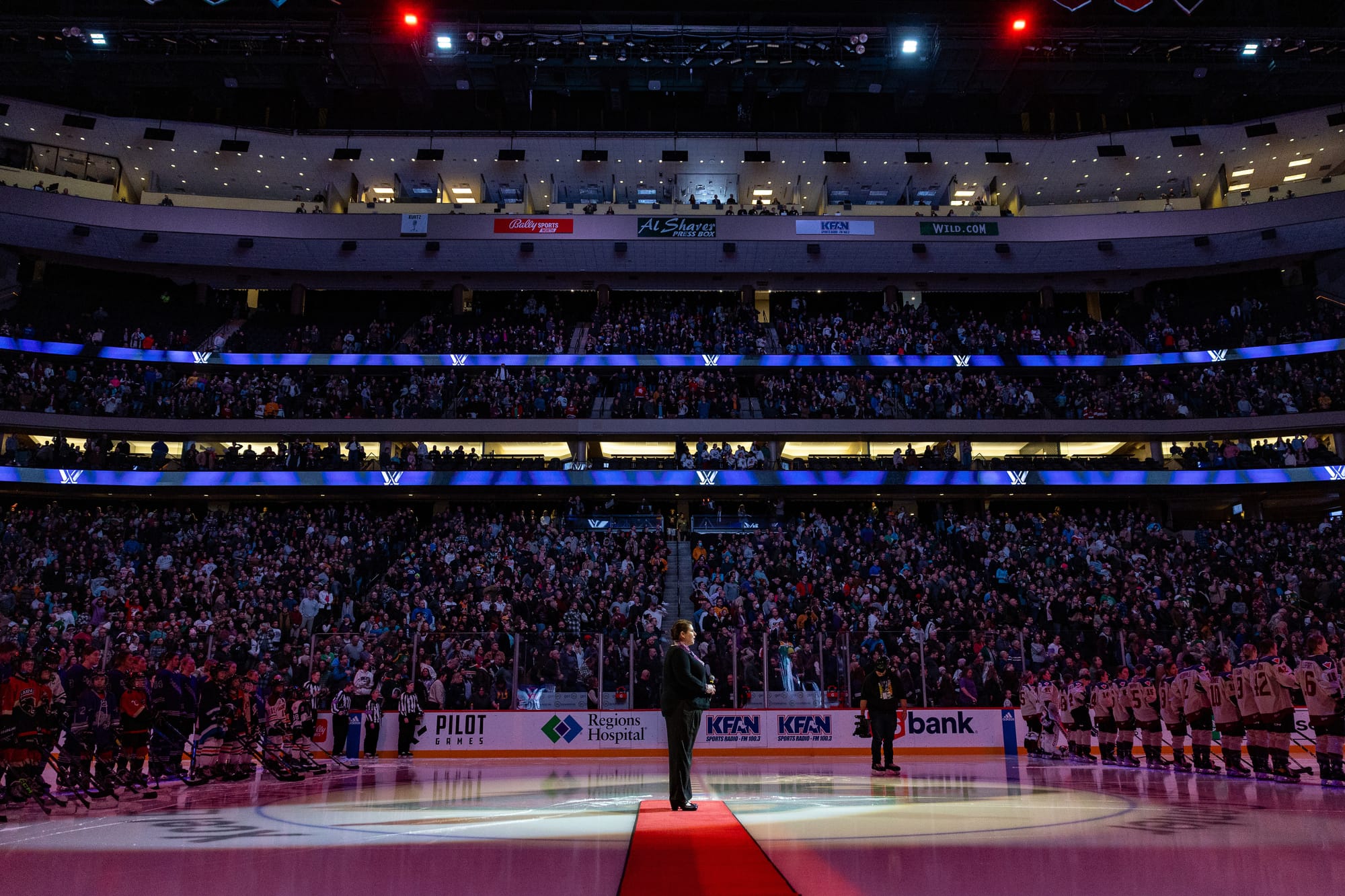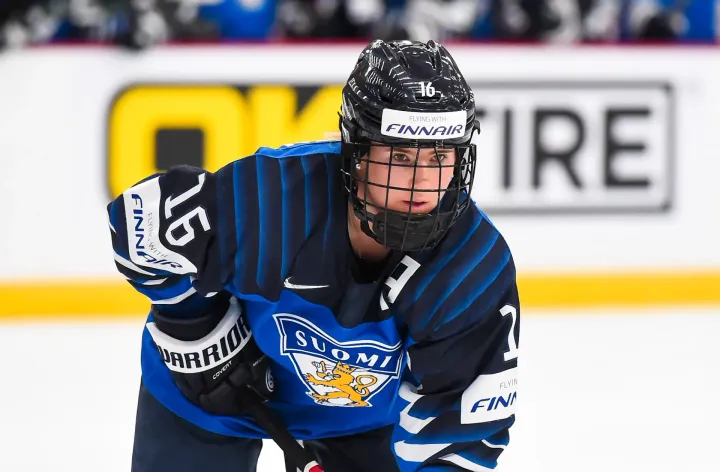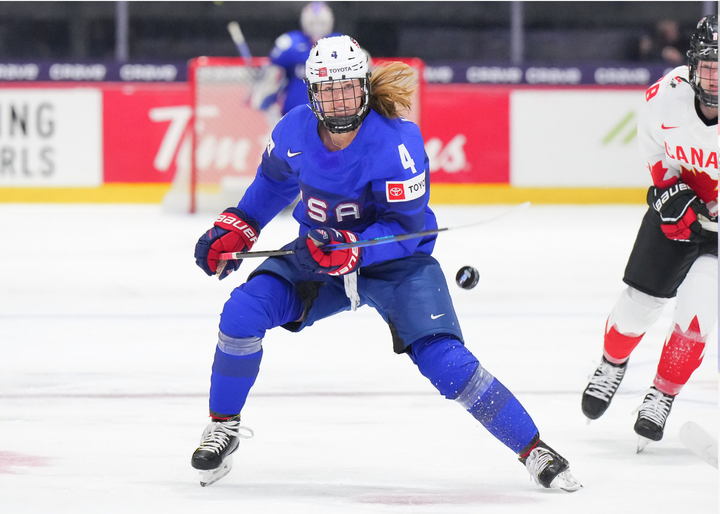2024 PWHL Minnesota Season Recap: Unlikely Path to Walter Cup Win
Minnesota wasn't the most likely of Walter Cup champions, and yet they claimed the inaugural PWHL title anyway in a season highlighted by young stars and depth goaltending combined.

So… did anyone see this season coming for Minnesota?
At the beginning of the season, here at The Ice Garden I predicted that Minnesota was maybe going to finish in the bottom half of the standings. After performing well to start the year, a late season step back had them falter slightly. They finished in fourth place, and still qualified for the playoffs.
Where they went on to reverse sweep the number one team in the PWHL (who picked to play them in the playoffs, mind you), and then took down Boston in five to take the inaugural Walter Cup championship.
Really, it’s as storybook of a season for PWHL Minnesota as it could be.
Was it without its challenges? No, of course not. This is a team that lost rookie sensation Taylor Heise for multiple games in the middle of the year, and had the worst penalty kill (67.2% success rate) and second-worst power play (8.2% conversion rate) throughout the league. Not to mention before winning Game Three of their series against Toronto in the first round, the team was winless following the return from the international break (0-7 overall in the regular and postseason combined).
However, they still managed to find a way to claim the trophy, with a shutout victory on Boston’s home ice to close out the series. What a year, what a season, and what a story.
Record:
8-4-3-9 overall
5-2-2-3 at home, and 3-2-1-6 away.
Takeaway:
Minnesota was a team that thrived on playing at home. Their seven wins in a home arena is tied for second-most in the league, while their seven losses away from home is tied for worst in the league.
What helped? The crowd in St. Paul was one of the best in the league all year. Including 13,316 fans in attendance for the team's home opener, and another 13,104 who attended Game Four of the Finals at the Xcel Energy Center. The team averaged 7,268 people in attendance across 11 games in St. Paul in the regular season. Building on that will be crucial for the league moving forward, and the team seems poised to do so.

Team MVP & Rookie of the Year:
I want to separate this question between the regular season and the postseason, because frankly, there are a few players who deserve to be highlighted.
First up, in the regular season, combine MVP and ROTY into a single player – Grace Zumwinkle. With Heise missing five games, Zumwinkle snuck in and ended up leading the team in both goals (11) and points (19). Her efforts over the season earned her a nomination for the league’s Rookie of the Year award, and where she went the team went. When Minnesota was struggling to find a win toward the conclusion of the regular season, Zumwinkle was also struggling to score. Without her contributions, Minnesota would not have gotten to where they did throughout the year, and it’ll be exciting to see how she continues to perform in Year Two.
In the postseason though, it splits.
Taylor Heise might not have had the regular season she was expected to have, but in the postseason she was unstoppable. The winner of the Ilana Kloss Playoff MVP award dominated up and down the ice. She finished with eight points, including a two goal performance in Minnesota’s Round One clinching win over Toronto. Heise cleared the production of some of the veterans on the team, not to mention the other rookie players, and she deserves some Rookie of the Year love for it.
However, she’s not the only player who had a dominant playoff performance: Her line mate played pretty well too.
🤝 Communication is key, and Heise & Cava are proving it on the ice!
— PWHL Minnesota (@PWHL_Minnesota) May 26, 2024
These two have been setting each other up beautifully, assisting on each other’s goals during the playoffs! 🏆 pic.twitter.com/PYrEws1wY7
Michela Cava started the Walter Cup Final with zero points in her first five games. She proceeded to follow that up with eight points in the final, tying Heise for the team lead, and matching her regular season total in 19 fewer games to boot. One of the biggest reasons Minnesota kept ahead of Boston seemingly all series was Cava, and while Heise earned the playoff MVP, Cava deserves a shoutout too. Her production made all the difference, and for a second season in a row no less – in last year's Isobel Cup playoffs the forward finished with six points in four games for the Toronto Six en route to the championship. And the PHF playoff MVP award.
She had a case for this season's PWHL one too.
Special Shoutout:
Back before the start of the season, I emphasized how crucial the goaltending for Minnesota was going to be and how deep the team was in the position as a whole. In the regular season, Maddie Rooney and Nicole Hensley might not have been the two best goaltenders in the league statistically, but they performed well when they needed to and were as solid as they were expected to be. Then in the playoffs, they were even better.
After a shaky start for Hensley against Toronto, Rooney took over the following game and played near perfect hockey. And when Rooney showed some weakness against Boston, the team seamlessly turned back to Hensley where she was outstanding once again. The success of Minnesota started and ended with their goaltenders, and they deserve a special shoutout for getting the team to the Walter Cup as well.
This is really something. PWHL Minnesota goalies in the playoffs:
— Mike Murphy (@DigDeepBSB) May 30, 2024
Hensley: 2 shutouts, .945 Sv%, 6 GA, 3 wins in 5 starts, 1 game with a sub .900 Sv%
Rooney: 2 shutouts, .948 Sv%, 6 GA, 3 wins in 5 starts, 1 game with a sub .900 Sv%
What the heck?
So Who’s Coming Back?
The good news is a lot of Minnesota’s biggest names are all signed through at least the end of next season. Kendall Coyne Schofield, Kelly Pannek, Heise, Zumwinkle, and Denisa Křížová are all signed in the forward group. On defense, Lee Stecklein, mid-season pickup Sophie Jaques, Maggie Flaherty, and Natalie Buchbinder are expected to return as well. Plus both Hensley and Rooney are under contract in the goaltenders slot again.
That leaves a lot of open spots on Minnesota’s roster however, and it’ll be intriguing to see how they construct the group once again in 2024-25.
Biggest Surprise:
I mean, winning the Walter Cup counts as a pretty big surprise right? Although, I’d argue the lack of production on the special teams also has to count for something here.
With a top unit including Coyne, Heise, and Zumwinkle to name a few, a 8.2% success rate on the power play is astounding. For a team that had such high expectations offensively coming into the season, the lack of production on the extra skater advantage really hurt their regular season standings, and honestly contributed to some of their struggles in the playoffs.
Over 26 chances on the PP over 10 games, the team scored just twice — with both coming in Game Five against Toronto. In the finals, Minnesota went 0/11, and finished the postseason at a 7.6% conversion rate. Not great.
Then you have to combine the low power play percentage with a penalty kill that gave up the most goals against by a large margin. Minnesota had 20 goals scored against their penalty kill in the regular season – the next closest team gave up 13. And Minnesota was the least penalized team in the league at just 61 times short handed. While they were perfect on the PK in the playoffs, the 67.2% kill rate in the regular season is not sustainable moving forward.
Next season, in order to have an even better season, perhaps taking a look at the special teams should be high on the coaching staffs to-do list. Just a suggestion, though.
The 2024-25 season is still a decent bit away though, and until then Minnesota has one retort for any criticism sent their way: The Walter Cup back in St. Paul with them.
All Stats Provided by the PWHL's Website or TIG's Mike Murphy. Contract status provided by Kyle Cushman.






Comments ()